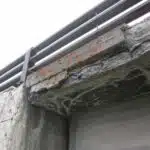Concrete is a versatile and durable material that is used in many different applications, from building foundations to driveways and sidewalks. However, one of the downsides of concrete is that it can easily become stained, particularly when it comes into contact with oil. Oil stains on concrete are not only unsightly but can also be difficult to remove, especially if they have been left untreated for a long period of time. As such, knowing how to properly remove oil stains from concrete is an important skill for anyone who wants to maintain the appearance and integrity of their property.
In this article, we will explore some effective methods for removing oil stains from concrete surfaces. We will cover both basic techniques that can be done using household items as well as more advanced methods that require specialized cleaning products and equipment. By following our advice, you will be able to successfully eliminate stubborn oil stains from your concrete surfaces and restore them to their original condition. Whether you are a homeowner or business owner looking to keep your property looking its best, this guide has all the information you need to get started.
Understanding The Nature Of Oil Stains
Oil stains on concrete can be a stubborn nuisance that require careful attention to remove. Before attempting any cleaning methods, it is important to first understand the nature of oil stains. Analyzing causes of oil stains can help in identifying the best approach for removal and prevention of future occurrences.
Oil stains on concrete commonly occur due to spills from vehicles, outdoor equipment or machinery. These spills can leave behind a residue that is not only unsightly but also poses a hazard as it makes the surface slippery. Other factors that contribute to oil stains include poor drainage systems or porous concrete surfaces that allow oils to seep through and accumulate over time.
Preventive measures can go a long way in reducing the occurrence of oil stains on concrete surfaces. Installing drip pans or trays under vehicles and machinery can prevent spills from reaching the ground. Regular maintenance of equipment and machinery can also reduce the likelihood of leaks or drips that cause oil stains. In addition, sealing concrete surfaces with a sealant designed for this purpose helps create a barrier against oils seeping into the pores of the concrete.
Understanding what causes oil stains on concrete is crucial in determining how best to remove them. Identifying the type of oil stain is also critical as different types require different cleaning methods.
Identifying The Type Of Oil Stain
Understanding the nature of oil stains is essential to effectively removing them from concrete. However, identifying the type of oil stain can be equally important. Identifying Oil Stains: Common Causes, Prevention Techniques, and DIY Testing Methods will help you to determine the type of stain that you are dealing with.
Oil stains on concrete can come from a variety of sources such as cars, machinery leaks, or spills during cooking. To prevent these types of stains, it is best to avoid spilling oils in areas where they could potentially come into contact with concrete surfaces. Additionally, parking vehicles on cardboard or other absorbent materials can also help to catch any drips or leaks. If prevention methods fail, DIY testing methods can help identify the type of oil stain present.
Differentiating between fresh and old oil stains is crucial when it comes to effective removal. Fresh stains are typically easier to remove than older ones because they have not had as much time to penetrate into the porous surface of the concrete. Tips and tricks for effective removal include using absorbent materials such as cat litter or baking soda to soak up excess oil before applying a cleaning solution and using a pressure washer for more stubborn stains. In the next section, we will discuss gathering the necessary materials needed for removing oil stains from concrete effectively.
Gathering The Necessary Materials
To effectively remove oil stains from concrete, you will need to gather the necessary materials. Depending on the severity of the stain and your personal preferences, you may choose to go the DIY route or hire a professional cleaning service. Before making this decision, it is important to weigh the cost comparison between these options.
If you decide to tackle the stain yourself, there are several eco-friendly materials that can aid in the process. For example, baking soda and vinegar are great natural cleaners that can break down grease and oil stains. However, it is important to note that while these materials have benefits such as being eco-friendly and inexpensive, they also have drawbacks such as requiring more effort and time to produce significant results.
Alternatively, hiring a professional cleaning service may be a more efficient option for removing oil stains from concrete. While it may be more costly than a DIY approach, there are benefits such as saving time and having access to specialized equipment and knowledge. However, it is crucial to ensure that the cleaning service uses eco-friendly materials if this is a priority for you.
When deciding whether to go DIY or professional for removing oil stains from concrete, consider weighing the cost comparison between these options as well as evaluating eco-friendly materials’ benefits and drawbacks. Once you have made this decision, it’s time to move onto preparing the stained area for cleaning.
Preparing The Stained Area
1.Scrubbing is an effective method for removing oil stains from concrete, as it allows for mechanical abrasion and the breakdown of tougher stains. 2.Wetting the area before scrubbing can help to further loosen the stain, making it easier to be removed from the concrete. 3.When scrubbing the stained area, it is important to use the appropriate cleaning tool for the job, such as a stiff brush or a pressure washer. 4.When wetting the area, it is important to use the appropriate amount of water to prevent further staining of the concrete.
Scrubbing
To effectively remove oil stains from concrete, choosing the right scrubbing tool is crucial. While there are many options available, it is important to select a tool that will not damage the surface of the concrete. A stiff-bristled brush or a scrubbing pad made specifically for cleaning oil stains are both good options. It is also important to consider the size of the stained area when selecting a tool.
In addition to choosing the right scrubbing tool, utilizing best practices for scrubbing technique can greatly improve results. When scrubbing, it is important to apply enough pressure to remove the stain without damaging the concrete. Using a circular motion can help loosen and lift the stain from the surface. It may also be helpful to use a cleaning solution specifically designed for removing oil stains.
Overall, by properly preparing the stained area through effective scrubbing techniques, it is possible to successfully remove oil stains from concrete surfaces. By carefully selecting the appropriate scrubbing tool and mastering best practices for technique, individuals can achieve optimal cleaning results and restore their concrete surfaces to their original state.
Wetting The Area
To effectively prepare a stained area for cleaning, it is essential to wet the surface. Wetting the area can help loosen and lift the oil stain from the concrete. In addition, applying water to the surface can help prevent dust and debris from becoming airborne during the cleaning process.
When wetting the area, it is important to apply enough pressure to ensure that all areas of the stain are thoroughly saturated. This can be achieved by using a high-pressure hose or a bucket of water and a stiff-bristled brush. It may also be helpful to use a detergent specifically designed for cleaning oil stains.
Using detergents can help break down and dissolve the oil stain, making it easier to remove. When using detergents, it is important to follow manufacturer instructions carefully and avoid using products that contain harsh chemicals that could damage the concrete surface. By properly wetting and applying pressure when preparing a stained area for cleaning, individuals can achieve optimal results and restore their concrete surfaces back to their original state.
Applying Household Items For Basic Cleaning
As if cleaning oil stains from concrete wasn’t enough of a challenge, it’s often the case that household items don’t do the trick. While they may be effective at removing some mild stains, pesky ones require a different approach. Don’t worry, though – there are alternative methods you can try to remove those stubborn spots.
One option is to use commercial cleaners specifically designed for concrete. These products are formulated to break down oil and grease stains without damaging the surface of your concrete. Before using any commercial cleaner, be sure to read the label carefully and follow all safety precautions. Wear gloves and eye protection, work in a well-ventilated area, and avoid inhaling any fumes.
If you’re dealing with an especially stubborn stain, consider using a pressure washer. This powerful tool can blast away dirt and grime that has embedded itself into your concrete surface. However, it’s important to use caution when operating a pressure washer – they can be dangerous if not used properly. Always wear protective gear like goggles and work gloves, and make sure you have a firm grip on the machine before turning it on.
Using Commercial Cleaners For Stubborn Stains
Commercial cleaners are often the go-to solution for stubborn oil stains on concrete. These products are formulated to break down and dissolve oil, grease, and other tough stains. However, it is important to note that not all commercial cleaners are created equal. Some may contain harsh chemicals that can be harmful to both your health and the environment.
When using commercial cleaners, it is important to read and follow the instructions carefully. Wear protective clothing such as gloves, goggles, and a face mask to avoid contact with the cleaner and prevent inhalation of fumes. Avoid using these products in poorly ventilated areas or near open flames. Additionally, be sure to test the product on a small area first before applying it to larger stains.
Alternatives to chemicals exist for those who prefer eco-friendly cleaning options. One alternative method is to use absorbent materials such as cat litter or sawdust to soak up excess oil before scrubbing with dish soap and warm water. Another option is to create a paste of baking soda and water, apply it directly onto the stain, let it sit overnight, then rinse with water in the morning.
By following safety precautions when using commercial cleaners and considering alternatives to chemicals when possible, you can effectively remove stubborn oil stains from concrete without putting yourself or the environment at risk. However, if these methods do not work or if you have concerns about using them yourself, consider consulting a professional cleaning service for further assistance in removing oil stains from your concrete surfaces.
Transition: While commercial cleaners offer an effective solution for removing tough stains from concrete surfaces, there are also natural remedies available that provide eco-friendly cleaning options for those who prefer them.
Trying Natural Remedies For Eco-Friendly Cleaning
Eco-friendly cleaning products are becoming increasingly popular due to their minimal environmental impact. People are now realizing the importance of using natural remedies for cleaning purposes. These eco-friendly products can be used for various cleaning tasks, including removing oil stains from concrete.
DIY cleaning solutions are another option available to those looking for eco-friendly cleaning methods. These solutions can be made easily at home with simple household ingredients such as vinegar, baking soda, and lemon juice. For instance, a mixture of baking soda and water can be applied to the oil stain and left overnight before being washed off with warm water in the morning.
Using eco-friendly cleaning products or DIY solutions not only benefits the environment but also ensures that no harsh chemicals are used in the process. This is particularly important when dealing with difficult stains such as oil on concrete surfaces. By opting for these natural remedies, one can achieve a clean surface without compromising on quality. In the next section, we will discuss utilizing pressure washing techniques for stubborn oil stains on concrete surfaces.
Utilizing Pressure Washing Techniques
Choosing appropriate equipment is crucial when pressure washing concrete surfaces. The right equipment will ensure effective cleaning without damaging the surface. A pressure washer with a PSI of at least 3,000 and a flow rate of 4 gallons per minute is recommended for removing oil stains from concrete. Additionally, choose a nozzle tip that provides a wide spray pattern to cover more surface area, but not too wide that it reduces the pressure.
Safety precautions during pressure washing are also important to consider. Wear protective gear such as safety glasses, gloves, and non-slip shoes to prevent injuries. Keep a safe distance from the surface being cleaned to avoid injury from flying debris or high-pressure water spray. Also, be cautious of electrical outlets and other potential hazards in the surrounding area.
Using pressure washing techniques can effectively remove oil stains from concrete surfaces. However, it’s important to choose appropriate equipment and take necessary safety precautions before starting the process. With these considerations in mind, pressure washing can be an efficient way to deep clean your concrete surfaces.
Transitioning into the subsequent section about using absorbent materials for deep cleaning: For those who prefer alternative methods of deep cleaning their concrete surfaces, using absorbent materials may be an option worth exploring.
Using Absorbent Materials For Deep Cleaning
- When choosing an absorbent material to remove oil stains from concrete, it is important to consider the absorbency of the material, the cost of the material, and the amount of material needed for the job.
- Preparing the concrete surface for deep cleaning is essential to ensure maximum results. This includes sweeping away any loose debris, and rinsing the area with a pressure washer.
- Applying the absorbent material to the stained area should be done with care, and in a uniform manner. Care should be taken to ensure the material is evenly distributed, and allowed to remain on the surface for the recommended amount of time.
- Once the absorbent material has been left to sit on the surface, it should be lightly scrubbed with a stiff brush to remove any stubborn stains.
- The absorbent material should then be allowed to dry before it is removed from the surface.
- After the absorbent material has been removed, the concrete surface should be rinsed with a pressure washer to remove any remaining residue.
Choosing Absorbent Materials
When it comes to removing oil stains from concrete, choosing the right absorbent materials is crucial. There are two options available: DIY or store bought. Each has its own set of pros and cons that need to be considered.
DIY options for absorbent materials can include items such as kitty litter, baking soda, or sawdust. These materials are readily available in most households and are cost effective. However, they may not be as effective as store-bought options in removing deep-set oil stains. Store bought options such as powdered cleaners or degreasers tend to have stronger formulas that can penetrate deeper into the concrete surface to lift stubborn oil stains. However, they come at a higher cost compared to DIY options.
Ultimately, choosing the right absorbent material depends on the severity of the oil stain and personal preference. If you’re looking for a cost-effective solution and don’t mind putting in some elbow grease, DIY options might be your best bet. On the other hand, if you’re dealing with a severe oil stain that requires more heavy-duty cleaning power, store bought options might be worth the investment. Regardless of which option you choose, make sure to follow proper safety precautions and read all product labels before use.
Preparing The Concrete Surface
When it comes to using absorbent materials for deep cleaning, one important aspect that should not be overlooked is preparing the concrete surface. Proper preparation can make a significant difference in the effectiveness of the absorbent material, as well as prolong the life of your concrete surfaces. One crucial step in preparing the concrete surface is sealing it. Concrete sealing can help prevent oil and other stains from penetrating deep into the surface, making them easier to clean.
There are various surface preparation techniques that can be used before applying sealant. First, any existing stains or debris should be removed from the surface using appropriate cleaning methods such as pressure washing or scrubbing with a detergent solution. Once cleaned, it’s essential to inspect the surface for any cracks or damage that need repair before sealing. Repairing these damages will help ensure that the sealant adheres correctly and provides optimal protection.
After repairing any damages, the next step is to apply a concrete sealer according to manufacturer instructions. This process will provide an additional layer of protection against oil and other stains and make future cleaning easier. It’s worth noting that different types of sealers are available for different types of concrete surfaces, so it’s essential to choose the appropriate sealant for your specific needs. By properly preparing your concrete surfaces before using absorbent materials, you’ll ensure that they stay clean and protected for years to come without requiring frequent deep-cleaning interventions.
Applying Absorbent Materials
Now that we have discussed the importance of preparing concrete surfaces before using absorbent materials for deep cleaning, let’s move on to a crucial aspect: applying the absorbent material. The right choice of absorbent material can make all the difference in how effectively it removes oil and other stains from concrete surfaces. Furthermore, applying an absorbent material correctly can provide long-term benefits such as preventing future surface damage and reducing maintenance costs.
When it comes to choosing the right absorbent material, there are several factors to consider. Firstly, it’s essential to select an absorbent material that is compatible with your concrete surface. Different surfaces require different types of materials, and using an incompatible product can cause damage or reduce effectiveness. Secondly, you should consider the nature of the contaminants you want to remove from your surface. Some materials are more effective against specific types of stains than others. Lastly, you should also consider factors such as cost and environmental impact when making your selection.
Applying an absorbent material correctly is just as important as selecting the right one. Proper application ensures that the product adheres well to your surface and maximizes its effectiveness in removing contaminants. When applying the product, it’s crucial to follow manufacturer instructions carefully and ensure even coverage across the entire surface area. After application, allow sufficient time for the product to work before removing it according to instructions.
In conclusion, choosing and applying an appropriate absorbent material can provide significant benefits when deep-cleaning concrete surfaces. By considering factors such as compatibility with your surface type and nature of contaminants beforehand and following correct application procedures, you can optimize effectiveness and achieve long-term benefits such as reduced maintenance costs and longer-lasting protection against stain damage.
Applying Chemical Treatments For Tough Stains
The use of chemical treatments is often necessary to remove tough oil stains from concrete surfaces. These treatments can be highly effective at breaking down the oil and removing it from the surface of the concrete. However, it is important to take safety precautions when using these solvents to ensure that they do not cause harm to yourself or others.
One important factor to consider when deciding on a chemical treatment for an oil stain is the effectiveness of solvents. There are many different types of solvents available, each with varying degrees of effectiveness at removing oil stains. It is important to choose a solvent that is specifically designed for use on concrete surfaces and that has been proven to be effective at removing oil stains.
When using chemical treatments, it is also important to take proper safety precautions. This may include wearing protective clothing such as gloves and goggles, ensuring adequate ventilation in the area where you are working, and following any instructions provided by the manufacturer of the solvent. Failure to take these precautions can result in serious injury or even death.
Moving forward with cleaning efforts for tough oil stains on concrete surfaces requires careful consideration of various factors including solvent type and personal safety measures. To further explore cleaning options, one may consider using heat as a means of lifting oil stains from concrete surfaces without causing damage or harm.
Using Heat To Lift Oil Stains
Heat application techniques can also be used to lift oil stains from concrete surfaces. This method involves using a heat source to warm up the oil, causing it to expand and loosen its grip on the concrete. The heat also helps to evaporate the oil, making it easier to clean up.
To use this technique, you will need a heat source such as a propane torch or heat gun. Hold the flame or heat gun about 6 inches away from the stain and move it back and forth over the affected area for several minutes. Be sure to wear protective clothing and goggles when using this method, as well as keeping a fire extinguisher nearby in case of any accidents.
Safety precautions for using heat include being aware of flammable materials nearby, ensuring proper ventilation in the area, and not leaving the heat source unattended. It is also important to test a small area of the concrete first before applying heat to the entire stain, as excessive heat may cause damage to some types of concrete surfaces.
If these methods do not work or if you are uncomfortable attempting them yourself, seeking professional cleaning services may be your best option. A professional cleaning company will have access to specialized equipment and knowledge that can effectively remove even deep-set oil stains without damaging your concrete surface.
Seeking Professional Cleaning Services
Using heat to lift oil stains can be a great DIY solution for smaller stains, but sometimes it just won’t cut it. When you have a larger oil stain on your concrete, seeking professional cleaning services may be the best option for you. While some homeowners think that hiring professionals is an unnecessary expense, there are many benefits to doing so.
Firstly, professionals have access to specialized equipment and cleaning agents that are not available to the general public. These tools and products are specifically designed for removing tough stains like oil from concrete surfaces. In addition, professional cleaners have extensive experience in cleaning all types of surfaces and can guarantee optimal results without causing damage to your property.
While some may think that hiring professionals is costly, it can actually be a cost-effective solution in the long run. If you attempt to remove an oil stain yourself but do not succeed, you may end up causing more damage to your concrete surface by trying multiple methods or using harsh chemicals. This could result in even higher repair costs down the line. By hiring professionals who know exactly what they are doing, you will save time and money in the long run.
In conclusion, while DIY solutions like using heat to lift oil stains can work for small stains, seeking professional cleaning services is often necessary for larger or deeply embedded stains. Not only will you benefit from specialized equipment and experience, but hiring professionals can also be a cost-effective solution in the long run. In the next section, we will discuss preventative measures that homeowners can take to avoid future oil stains on their concrete surfaces.
Preventing Future Oil Stains
If you want to prevent oil stains from forming on your concrete surfaces, one of the most important steps you can take is to use sealants. Sealants work by creating a barrier between the concrete and any substances that might come into contact with it, including oil. When choosing a sealant, make sure to select a product that is specifically designed for use on concrete surfaces.
Another important factor to consider when trying to prevent oil stains is proper disposal of oil waste. Many people simply pour used motor oil down the drain or onto the ground, but this can have serious environmental consequences. Instead, be sure to dispose of used oil properly by recycling it or taking it to a hazardous waste disposal facility.
By taking these simple steps, you can greatly reduce your risk of dealing with oil stains on your concrete surfaces in the future. Remember to always use sealants and dispose of oil waste responsibly in order to keep your home and community safe from harm.
Transition: Now that you know how to prevent oil stains from forming on your concrete surfaces, it’s time to learn how to maintain those surfaces properly over time.
Maintaining Your Concrete Surfaces
Cleaning concrete surfaces should be done regularly to maintain the appearance and integrity of the material. Sealing the surface can help prevent staining, particularly from oil and acid. Repairs may be necessary for cracks and other damage to keep the surface from deteriorating further. Oil stains can be removed using a combination of detergents and degreasers along with a stiff bristled brush. Stains from other sources can be removed by using an appropriate cleaner and a soft bristled brush. Snow removal is important to prevent moisture buildup that can lead to cracking and staining.
Cleaning
When it comes to maintaining your concrete surfaces, preventing stains is crucial. Oil stains are one of the most common types of stains that can appear on concrete and can be unsightly if not removed promptly. To prevent oil stains from occurring, it is essential to take precautions when working with machinery or vehicles on the surface. Placing a mat or cardboard underneath the equipment can help catch any drips or spills before they can penetrate the concrete.
In addition to preventing stains, regular maintenance is also vital for keeping your concrete surfaces in good condition. A simple cleaning routine can go a long way in preserving the appearance and integrity of the concrete. Sweeping regularly to remove debris and dirt buildup, as well as pressure washing periodically, will help keep the surface looking clean and free from discoloration.
If an oil stain does occur, it’s important to act quickly to remove it. There are several methods for removing oil stains from concrete, including using a degreaser or applying kitty litter or sawdust to absorb the liquid before washing with soap and water. It’s important to avoid using harsh chemicals that could damage the surface of the concrete while attempting to remove tough stains. By following these prevention and maintenance tips, you can ensure that your concrete surfaces remain clean and free from unsightly oil stains.
Sealing
Maintaining your concrete surfaces is essential in keeping them looking their best and prolonging their lifespan. Aside from regular cleaning and stain prevention, sealing is also a crucial step in maintaining concrete surfaces. Sealing helps protect the surface from water damage, staining, and other environmental factors that can cause discoloration or deterioration over time. It also enhances the appearance of the surface by giving it a glossy finish.
When it comes to sealing concrete surfaces, using the right product is important. There are various types of sealers available in the market, including acrylic, epoxy, and penetrating sealers. Each type has its own benefits and drawbacks depending on the specific needs of your surface. Acrylic sealers are popular for their affordability and ability to enhance color while penetrating sealers are known for their durability and long-lasting protection.
To determine which sealer works best for your concrete surface, it’s best to consult with a professional cleaning expert who can assess your specific needs. They can recommend the appropriate sealer based on factors such as traffic volume, exposure to weather conditions, and level of gloss desired. By investing in proper sealing products and maintenance techniques, you can ensure that your concrete surfaces remain durable, attractive, and free from damage caused by environmental elements or heavy usage.
Repairs
As a professional cleaning expert, it’s essential to emphasize that maintaining your concrete surfaces goes beyond regular cleaning and sealing. Concrete patching and crack sealing are also crucial steps in ensuring the longevity of your surface. Over time, concrete surfaces can develop cracks and other damages that can compromise their structural integrity and appearance. By addressing these issues promptly, you can prevent further damage and extend the lifespan of your surface.
Concrete patching involves filling in holes or gaps in the concrete surface using specialized materials such as epoxy or cement-based compounds. This technique is ideal for repairing minor damages caused by heavy usage or exposure to harsh weather conditions. However, for more significant damages such as deep cracks or spalling, more extensive repairs may be necessary.
Crack sealing is another effective method for preventing water penetration and further damage to concrete surfaces. This process involves filling in cracks with specialized sealants that help prevent moisture from seeping into the surface. By addressing cracks early on, you can avoid costly repairs down the line while ensuring that your concrete surface remains structurally sound and visually appealing. Overall, incorporating regular repairs into your maintenance routine can help prolong the lifespan of your concrete surface while ensuring its functionality and aesthetic appeal.
Troubleshooting Common Problems
As the old saying goes, prevention is better than cure. This holds true for removing oil stains from concrete surfaces. The best way to avoid the hassle of cleaning up tough stains is by taking preventive measures. For instance, placing mats or rugs in areas where spills are more likely to occur can help keep the surface clean.
However, if you do end up with an oil stain on your concrete surface, don’t fret. There are several DIY techniques that you can try before calling in professional cleaners. One option is to use a combination of baking soda and dish soap. Simply mix the two until you get a paste-like consistency and apply it generously to the stain. Let it sit for a few hours before scrubbing it off with a stiff brush and rinsing with water.
If all else fails and the stain persists, it may be time to seek professional help. A cleaning expert can assess the extent of the damage and determine the best course of action. They may use specialized cleaning agents or equipment such as pressure washers to remove stubborn stains effectively. Remember that timely intervention is crucial when dealing with oil stains on concrete surfaces, so don’t hesitate to seek assistance if needed.
Overall, removing oil stains from concrete requires careful attention and effort. By following prevention tips and utilizing effective DIY techniques, you can keep your surfaces looking clean and well-maintained. And if all else fails, don’t hesitate to call in professional cleaning experts who have the knowledge and experience needed to tackle even the toughest of stains!
Conclusion
In conclusion, removing oil stains from concrete requires a comprehensive approach that considers the type of stain, necessary materials, and cleaning techniques. It is essential to understand that not all stains are the same and require different methods for effective removal. Basic household items such as baking soda, vinegar, and dish soap can be used for simple cleaning; however, it may be necessary to seek professional cleaning services for stubborn or extensive stains.
As the old adage goes, prevention is better than cure. Therefore, it is crucial to take proactive measures such as sealing your concrete surfaces and avoiding spills to prevent future oil stains. Additionally, regular maintenance of your concrete surfaces will help keep them in good condition while preventing costly repairs in the long run. In conclusion, with the right approach and tools, removing oil stains from concrete can be a manageable task that yields excellent results.
Image Credits
- “Oil stained brain” by Intrinsic-Image (featured)





























